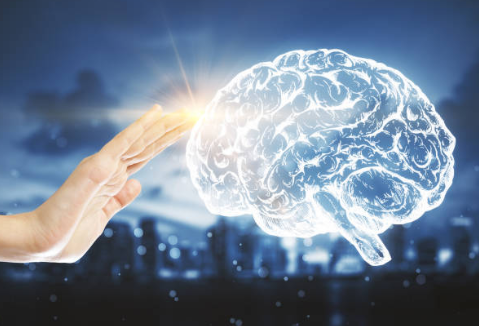Hypnosis Research
Learn about hypnosis research will yield numerous sources to assist you in obtaining the information you require.

Selfpause Affirmation App
Download the app to get 1,000’s of affirmation meditations and everything you need to write, record and listen to your own.
Whether you are looking for information on self hypnosis or other forms of hypnosis research, you will find many different sources to help you get the information you need. You will also find information on topics such as self hypnosis, cognitive and behavioural theories of the nature of hypnosis, and brain activity during hypnosis.
Brain activity during hypnosis

During hypnosis, the brain produces a specific type of activity. The activity varies depending on the kind of suggestion made. The right side of the brain is activated during hypnosis, which may help facilitate mental imagery. The right hemisphere is associated with the subconscious mind.
One of the most commonly used methods to study the neural substrate of hypnosis is electroencephalography (EEG). This technique involves recording brain activity. Scientists have used MRI scans to visualize the brain’s activity.
Researchers have also used functional magnetic resonance imaging (fMRI) to scan the brains of hypnotized subjects. They concluded that hypnosis modifies brain functional connectivity, which helps explain why hypnosis changes perceptions.
Other researchers have used neuroimaging techniques to study brain structures that are associated with pain. They have found that brain structures related to pain are located in several areas of the central nervous system. These structures are involved in several functions, such as perception, memory and sensation.
In one study, researchers studied the effects of non-pharmacological pain therapies on brain states. They found that hypnosis reduced pain perception by about 50 percent. They also found that hypnosis induced changes in motor cortex connections.
An alternative explanation for hypnosis proposes that there is a pattern of brain activity that is present during everyday experiences. This theory makes hypnosis seem less special and more like a commonplace experience. However, the study may not apply to all people.
In the University of Geneva study, researchers used fMRI to scan the brains of 12 subjects. During hypnosis, activity was decreased in the frontal lobes. The activity of the precuneus of the parietal lobe was increased. The activation of the cingulate gyrus, which is involved in emotional expression, was also increased.
The researchers also measured the activity of the gamma band, which connects the somatosensory and frontal cortices. They found that the gamma band was significantly less functionally connected during hypnosis. This suggests a breakdown in the organization of the oscillations in the frontal cortices.
Another study, published by researchers from the University of Hamburg, found a significant increase in the activation of the precuneus of the parietal lobe. The study also found that the right hemisphere was activated during hypnosis.
Neurochemical correlates of hypnotic processes and responses

Increasing evidence suggests that there are neurochemical correlates of hypnotic processes and responses. Recent studies have been carried out using noninvasive neuroimaging methods, such as the MRS scan, to determine the brain’s response to hypnotic suggestions. These findings have shown that high suggestible individuals exhibit differences in functional connectivity within and between brain regions. It is therefore important to investigate these differences and to understand the neurobiological basis of these differences.
One key brain region involved in hypnosis is the anterior cingulate cortex (ACC). This region is involved in a number of cognitive functions, including attention, emotion, and executive control. It also interacts with other brain regions, which could explain certain aspects of hypnotizability.
Previous studies have found that hypnotic suggestibility is associated with high levels of GABA concentration in the ACC. This may indicate that the ACC is a hub of information integration. Another key hypnosis-related region is the parietal cortex. This region is involved in attention and conflict monitoring. In this study, hypnosis reduced activity in the somatosensory cortex, which is an important region for attention and conflict monitoring.
Previous studies have also found links between neurochemicals and behavior in clinical populations. These studies have used the MRS scan to examine neurochemical concentrations in the ACC. They have also found that the ratio of GABA+/H20 values is related to HIP scores. These results suggest that higher levels of GABA may indicate greater capacity for reducing salience network activity, which in turn facilitates hypnotic responding.
Future research should investigate the impact of hypnotic suggestion on brain activity. This is particularly important given the fact that hypnosis is a highly suggestible trait. However, it is important to keep in mind that hypnosis is a trait that is stable throughout adulthood. Thus, a better understanding of its relationship with other factors could help to inform future treatments. In addition, future research should examine the neurochemical plasticity that may result from noninvasive brain stimulation.
Recent research suggests that the ACC may be involved in a number of aspects of hypnotizability, including its role in attention. It also may interact with other brain regions, which could explain specific aspects of dissociation. In addition, ACC activity is reduced during hypnosis.
Cognitive and behavioural theories of the nature of hypnosis

Throughout the centuries, there have been many theories about the nature of hypnosis. Although many of these theories contain some truth, it is not possible to fully explain hypnosis from a single factor. To better understand hypnosis, it is important to consider the underlying processes of cognitive and behavioural psychology.
Cognitive and behavioural theories of hypnosis are based on several key principles. These theories focus on how people perceive, interpret and structure events. They also consider how attitudes and beliefs can influence behaviour.
One theory, the role-taking theory, argues that individuals respond to hypnosis as motivated attempts to fulfil socially constructed roles. These roles include being a therapist or an expert. This theory has led to the mistaken idea that people in hypnosis are faking. However, hypnosis can actually be a form of re-synthesised behaviour. The process of re-synthesising behaviour involves establishing positive cognitions in the unconscious mind, replacing negative cognitions.
Another theory, the social-cognitive theory, suggests that individuals in hypnosis respond to suggestions with a sense of self-efficacy. This belief is strengthened by positive subjective experiences. This belief also strengthens a person’s ego. This belief also strengthens a person’s belief that positive suggestions are ingrained in their unconscious mind.
This theory also argues that hypnotic responses are initiated by the same mechanisms as voluntary responses. However, these responses are experienced differently. For instance, a hypnotist may lead a therapist to believe that they have seen a false memory. The therapist may also believe that the patient believes that they have seen a false memory. This is called the Hawthorne effect.
Another theory, the dissociated control theory, argues that highly hypnotisable individuals develop functional dissociation from the contention scheduling system. This results in highly hypnotisable individuals deploying attention differently. Consequently, highly hypnotisable individuals are able to respond to suggestions for amnesia, analgesia, and other hypnotic requests.
These theories of the nature of hypnosis have been used in a number of studies to evaluate hypnosis and its effects. These studies include surgical experiments, which have shown that hypnosis can increase the speed of recovery from surgery. Other studies have examined the effects of hypnosis on a patient’s perceptions of pain. Hypnosis also appears to be effective in pain management in burn patients.
Self-hypnosis

Using self-hypnosis to deal with pain is an effective and proven method. It can reduce anxiety and catastrophizing, improve relaxation and increase activity. In addition, it can also improve sleep.
There are several studies that have shown that self-hypnosis can help reduce pain and improve emotional relaxation. In addition, self-hypnosis training can reduce the use of analgesic or sedative medication. It can also improve physical therapy, help the patient relax and decrease catastrophizing.
Clinical hypnosis has proven useful in treating acute and chronic pain, childbirth trauma, and post-traumatic stress disorder. It can also be used for weight loss, habit control, and psychological counseling.
In one study, a group of 55 teenage girls received a menstrual pain scale before they were subjected to a hypnosis intervention. Results indicated that self-hypnosis helped to reduce menstrual pain. This was also related to increased confidence and improved relaxation.
Another study found that a group of children with chronic pain illnesses found self-hypnosis to be helpful. Children who received self-hypnosis training had a decrease in emotional distress and background daily pain. They also increased their athletic performance.
There were also findings in a study of basketball shooting. Two groups received self-hypnosis training, and one group did not. Results indicated that the group receiving hypnosis training experienced a significant increase in mean shooting performance. However, the group that did not receive hypnosis had a decrease in performance.
In another study, a group of hypnosis trained athletes showed a significant increase in their ability to jump shoot. Researchers also discovered that a hypnosis intervention increased the mean flow score.
In addition, self-hypnosis research has shown that it can be effective in treating dysmenorrhea. The procedure involves the patient being guided into a deep state of relaxation by a specially trained hypnosis therapist. After the relaxation, the hypnosis therapist suggests ways to reduce the pain and make the woman more comfortable.
Self-hypnosis training can also decrease the use of analgesic or hypnotic medication, decrease catastrophizing, and improve the patient’s overall sense of well-being. It can also improve physical therapy and sleep.
Our Top FAQ's
Research on the effectiveness of hypnosis for treating various medical and psychological conditions has had mixed results. Some studies have shown that hypnosis can be effective for managing pain, reducing anxiety and depression, improving sleep, and helping with habit modification, among other things. However, other studies have found little or no benefit from hypnosis for these conditions. More research is needed to fully understand the potential of hypnosis as a treatment option.
The brain responds to hypnosis by entering a state of focused attention and increased suggestibility. Neuroimaging studies have shown that the hypnotic state is associated with changes in brain activity in areas involved in attention, memory, and emotional processing.
Some common misconceptions about hypnosis include the idea that it involves loss of control or the ability to make people do things against their will. However, scientific research has shown that hypnosis does not involve a loss of control and that people remain fully aware and in control of their actions while in the hypnotic state.
The use of hypnosis in clinical practice and research has evolved significantly over time. It was initially used primarily as a tool for entertainment and was not taken seriously as a therapeutic intervention. However, as research has increased our understanding of the hypnotic state and its potential therapeutic effects, hypnosis has become more widely accepted as a treatment option in some medical and mental health settings.
There are generally few risks or negative side effects associated with hypnosis when it is used by a trained and licensed practitioner. However, as with any treatment, there is a potential for negative side effects, such as the intensification of symptoms or the emergence of previously hidden psychological issues. It is important to work with a qualified and experienced practitioner to minimize any potential risks.
